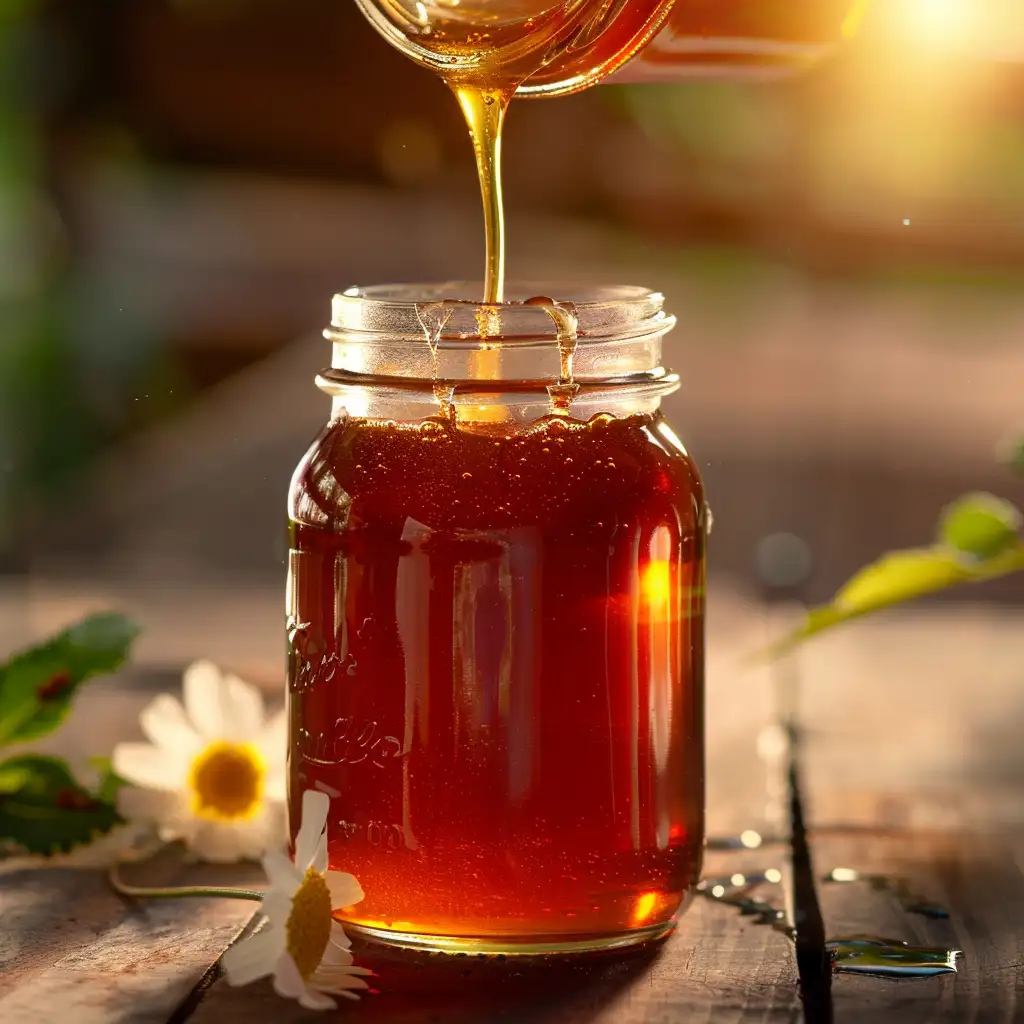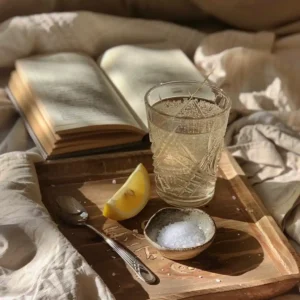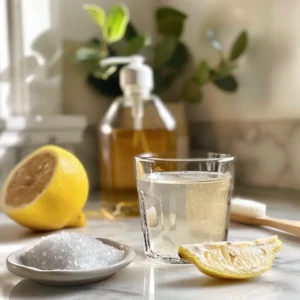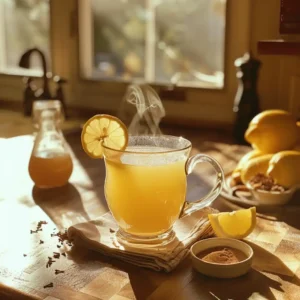Our red honey trick story didn’t begin in a fancy lab or a glossy cookbook—it started in my kitchen, mid-morning, when I accidentally overboiled a fruity honey concoction I was trying to make from leftover strawberry pulp. What emerged wasn’t just sticky syrup—it was something bright, bold, and strangely delicious. A red honey-like spread that surprised me with its taste and texture. That’s when I fell down the rabbit hole of the red honey trick.
If you’ve seen the trend online, you’ve probably heard it claimed to be natural, beneficial, and downright tasty. But what is red honey? Is it a real bee product? Is it artificially colored? And what’s with the buzz around using it as a healthy sweetener or beauty hack?
In this article, I’ll walk you through what I’ve discovered—and tried—about the red honey trick. From myths and facts to kitchen trials, from turning crystallized honey into a dreamy whipped version to crafting flavored honey from scratch using fruits like strawberries and beets. I’ve even gone back to some of our favorite old-school tricks like the honey trick recipe for memory to see how they compare.
Whether you’re here for the flavor, the health whispers, or the fun DIY angle, this guide is going to give you everything you need. Stick with me, Sifaw, your home cook buddy who believes that even small kitchen mistakes can lead to sweet surprises.
Don’t miss our What Is the Honey Trick Recipe? for a helpful background before diving into red honey magic.
What Is the Red Honey Trick?
The Origin and Curiosity Around Red Honey
I remember the first time I heard about the red honey trick—it sounded like one of those food myths that lives on TikTok for a week and then disappears. But as I dug deeper (and yes, spilled a bit of honey in the process), I realized this trend had roots. Red honey isn’t always what it seems—and that’s what makes it so fascinating.
Traditionally, honey is golden, amber, or even dark brown depending on the flowers the bees visit. But red honey? That’s not exactly flowing from hives in bright crimson waves. Instead, what people call “red honey” is often either:
- A naturally tinted variety made by bees who feed on unique nectar (like Hawaiian Christmas berry or certain tropical flowers).
- Or more commonly, a DIY blend—raw honey infused with natural red ingredients like beetroot, strawberries, hibiscus, or pomegranate.
Some folks use it as a skin treatment. Others add it to warm teas. Many claim it helps digestion or boosts energy. While I can’t promise miracles, I can say it’s tasty, easy to make, and worth trying.
Why Is It Called “Red Honey” and Is It Real?
The phrase “red honey” sounds exotic, right? That’s part of its charm. It draws people in—but the truth depends on what version you’re talking about.
There are a few real examples of naturally red honey harvested in places where bees pollinate flowers that give off a reddish tint in the nectar. This honey can appear pinkish-red or deep reddish-amber, but it’s rare and pricey.
Most of the red honey you see online, however, is infused honey—meaning regular honey that’s mixed or slow-cooked with fruits or herbs to give it color and flavor. I made one at home with beet powder and fresh strawberries—and let me tell you, the deep ruby color and tangy finish were both beautiful and delicious.
So yes, the red honey trick is real, but not always in the way you expect. It’s less about rare bee farms and more about what you can whip up in your own kitchen.
Check out The Honey Trick Recipe to compare how different forms of honey magic stack up.
Is Red Honey Even Real? Understanding the Facts
Is There Such a Thing as Red Honey?
This question kept buzzing around my head as I experimented: Is red honey actually produced by bees? The answer is… sometimes.
There are confirmed cases of bees producing naturally reddish honey, particularly in regions where they feed on specific red-pigmented nectar sources like:
- Hawaiian Christmas berry (Schinus terebinthifolia)
- Wild buckwheat
- Certain types of wildflowers with high anthocyanin content
But it’s incredibly rare and often not commercially available in grocery stores. In fact, most “red honey” sold online or seen on social media isn’t bee-made in that hue—it’s crafted in the kitchen using fruits, herbs, and spices. I’ve even heard of some versions using hibiscus flowers or pomegranate molasses to infuse both color and subtle tang.
From what I’ve learned and tasted, the red honey trick most people try at home isn’t about finding rare nectar—it’s about creating a vibrant, flavored honey that turns heads and satisfies the tastebuds.
How It Differs From Regular and Manuka Honey
Let’s break it down simply in the table below:
| Type | Color | Flavor Profile | Notes |
|---|---|---|---|
| Regular Raw Honey | Golden/Amber | Sweet, floral | Unfiltered, local bees |
| Manuka Honey | Dark amber | Earthy, medicinal | High in MGO, used for wellness |
| Red Honey (DIY) | Bright red/pink | Sweet with fruity or tangy notes | Infused with berries, beets, hibiscus |
Red honey might not match Manuka’s medical reputation, but it certainly wins in the creativity and fun department. I like to think of it as a kitchen art project with benefits—a sweet treat you can customize based on your mood or the season.
And if you’re wondering about other wellness honey variations, learn more about Celery Cucumber ACV Cooler—another cool, refreshing blend in my kitchen experiments.
Print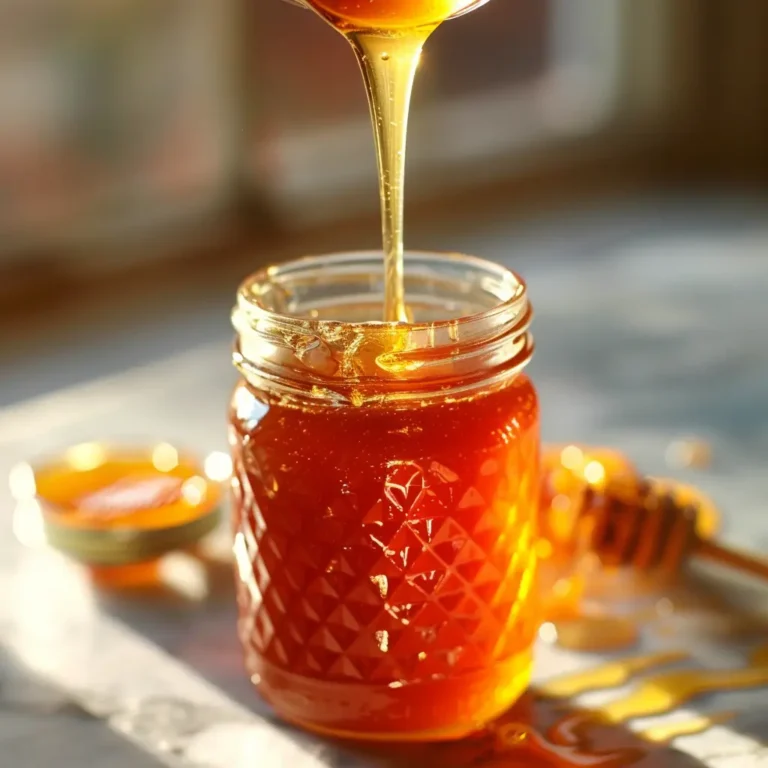
Red Honey Trick
A delicious DIY red honey spread made with strawberries and beetroot, inspired by a kitchen accident and trending wellness hack.
- Total Time: 15 minutes
- Yield: 1 jar 1x
Ingredients
- 1 cup raw honey (local if possible)
- 2 tablespoons strawberry puree (strained)
- 1 teaspoon beetroot powder
- Optional: 1/2 teaspoon lemon zest or hibiscus for extra tang
Instructions
- Gently warm the honey in a heat-safe bowl until just loosened—not hot.
- Stir in the beetroot powder until fully blended.
- Add the strawberry puree and mix well.
- Let the mixture cool, then transfer to a jar with a lid.
- Let it sit overnight to infuse fully before using.
Notes
Use freeze-dried fruit powder or reduced puree for better texture. Don’t overheat the honey to preserve nutrients. Let the honey rest overnight to deepen flavors and stabilize color.
- Prep Time: 10 minutes
- Cook Time: 5 minutes
- Category: Condiment
- Method: No-Cook
- Cuisine: DIY
Nutrition
- Serving Size: 1 tablespoon
- Calories: 64
- Sugar: 17g
- Sodium: 0mg
- Fat: 0g
- Saturated Fat: 0g
- Unsaturated Fat: 0g
- Trans Fat: 0g
- Carbohydrates: 17g
- Fiber: 0g
- Protein: 0g
- Cholesterol: 0mg
PART 3: How the Red Honey Trick Took Over TikTok and Health Circles
Trending Origins: What Sparked the Craze
Like many quirky kitchen trends, the red honey trick started gaining steam on TikTok, where creators were mixing raw honey with beets, strawberries, or even hibiscus tea and showing off vibrant jars of deep pink spreads. At first, I thought it was just a visual gimmick, but as more people shared their versions and claimed energy boosts, skin benefits, and better digestion, my curiosity grew.
I remember one viral clip showing someone stirring bright red honey into herbal tea, swearing it changed their morning routine. That was the tipping point for me—I had to try it myself. What I didn’t expect was just how easy and rewarding the process would be. From its eye-catching appearance to its subtly fruity sweetness, red honey isn’t just a visual trend—it’s become a flavorful staple in my kitchen.
Online buzz around this trick wasn’t just about health—it was also about creativity. People were crafting personalized flavors by infusing their honey with herbs, citrus, dried berries, even edible flowers. I found myself scribbling down ideas late at night, wondering what else I could mix in.
Why People Swear by the Red Honey Trick
When I started sharing my own red honey trials with friends, I realized something surprising—it sparked more conversations than any fancy dinner I’ve made.
People were intrigued. Why? Because it checks all the boxes:
- It’s natural.
- It’s easy.
- It’s pretty.
- And it makes you feel like a kitchen wizard.
Some believe the red tint from ingredients like beetroot adds antioxidant value. Others just love the smooth texture when blended into whipped honey (we’ll get to that soon). And there’s this nostalgic feeling—like you’re making something from scratch that feels both old-world and brand new.
Honestly? The red honey trick might not be a magic potion, but it’s a fun, flavorful experiment that makes your wellness journey feel more personal. And in a world full of overly complicated wellness trends, that simplicity feels refreshing.
How I Tried the Red Honey Trick at Home
My First Attempt with Natural Red Ingredients
I still remember that slow Sunday morning when I gave the red honey trick a try. My kitchen smelled like strawberries and warm honey, and my blender was humming away. I used three simple ingredients: raw wildflower honey, fresh strawberry pulp, and a pinch of beetroot powder. That’s it.
I gently heated the honey just enough to make it mixable—never boiling, just warm and pourable. Then I stirred in the fruit mix and let it cool before tasting. The result? A bright, smooth red honey that tasted like springtime. It was sweet with a slight tang, and the color was stunning—deep ruby, almost like a fruit glaze.
But my favorite part was spreading it on toast with a sprinkle of sea salt. It was the perfect balance of sweet, savory, and a bit unexpected. It reminded me of a jam, but lighter and silkier. It didn’t just look pretty—it made my breakfast feel fancy.
Mistakes I Made and What Worked Best
Of course, the first batch wasn’t flawless. I learned quickly that:
- Using too much fruit juice made it runny and hard to store.
- Overheating the honey changed its taste and killed its raw benefits.
- Skipping a straining step meant bits of pulp were floating around—still tasty, but less smooth.
So here’s what worked best for me:
- Use freeze-dried fruit powder or reduced puree. You get color and flavor without watering down the honey.
- Don’t overheat. Warm the honey gently so it blends easily but keeps its nutrients.
- Let it sit. After mixing, let the honey rest for a day in a closed jar. The flavors deepen, and the color stabilizes.
Red honey isn’t complicated—but like all good things, it rewards patience. And when I nailed the texture and balance, I felt like I’d discovered my new favorite kitchen staple.
Don’t miss our Strawberry Angel Food Cake if you want a dreamy dessert pairing to serve with your homemade red honey.
Turning Crystallized Honey into Whipped Gold
How to Turn Crystallized Honey into Whipped Honey (Easy Method)
If you’ve ever opened a jar of honey and found it grainy or solid, you’ve got crystallized honey. Don’t toss it—this is actually where the magic begins for whipped honey lovers. I learned this during a cold winter morning when my honey was nearly rock solid, and I decided to see what I could do with it instead of warming it into liquid.
Here’s how I transformed my crystallized honey into a light, fluffy spread:
- Gently warm the jar in a bowl of warm water (not boiling) until it loosens slightly. You don’t want it runny—just soft enough to stir.
- Transfer it to a stand mixer or use a hand mixer. Start whipping on low, then increase to medium speed.
- Whip for 5–10 minutes until the honey becomes pale and creamy.
That’s it! What you get is spreadable whipped honey that’s perfect for toast, biscuits, or stirring into warm tea. It holds its texture for weeks and is easier to scoop than traditional honey.
Now, here’s where the red honey trick gets a twist. Once whipped, I mixed in a spoonful of beet powder and some reduced strawberry puree—and wow. It looked like berry butter and tasted like a sweet, fruity cloud.
Storing Whipped Honey: Tips for Texture and Flavor
After whipping and flavoring, proper storage makes a big difference. I’ve ruined a few batches by forgetting this part:
- Use a clean, dry glass jar with a tight lid. No moisture should get in—honey is hygroscopic and will absorb water (which can cause spoilage).
- Keep it at room temperature, away from sunlight.
- Avoid storing it in the fridge—it can harden or crystallize again.
When made right, red whipped honey becomes a delightful treat that feels like a homemade luxury spread. Even my skeptical cousin who “doesn’t like fancy foods” spread it all over a warm biscuit and asked for the recipe.
If you’re curious about other easy and refreshing ways to use honey in your wellness routine, check out The Honey Trick Recipe—it’s a great foundation to build flavor variations like this one.
How to Make Flavored Honey from Scratch
Simple DIY Red Honey Recipe with Natural Flavor Infusions
Making flavored honey at home isn’t just satisfying—it’s downright fun. And the best part? You only need a few ingredients and a little patience. I’ve tried everything from orange zest to crushed lavender, but red honey with a fruity kick has become my absolute favorite.
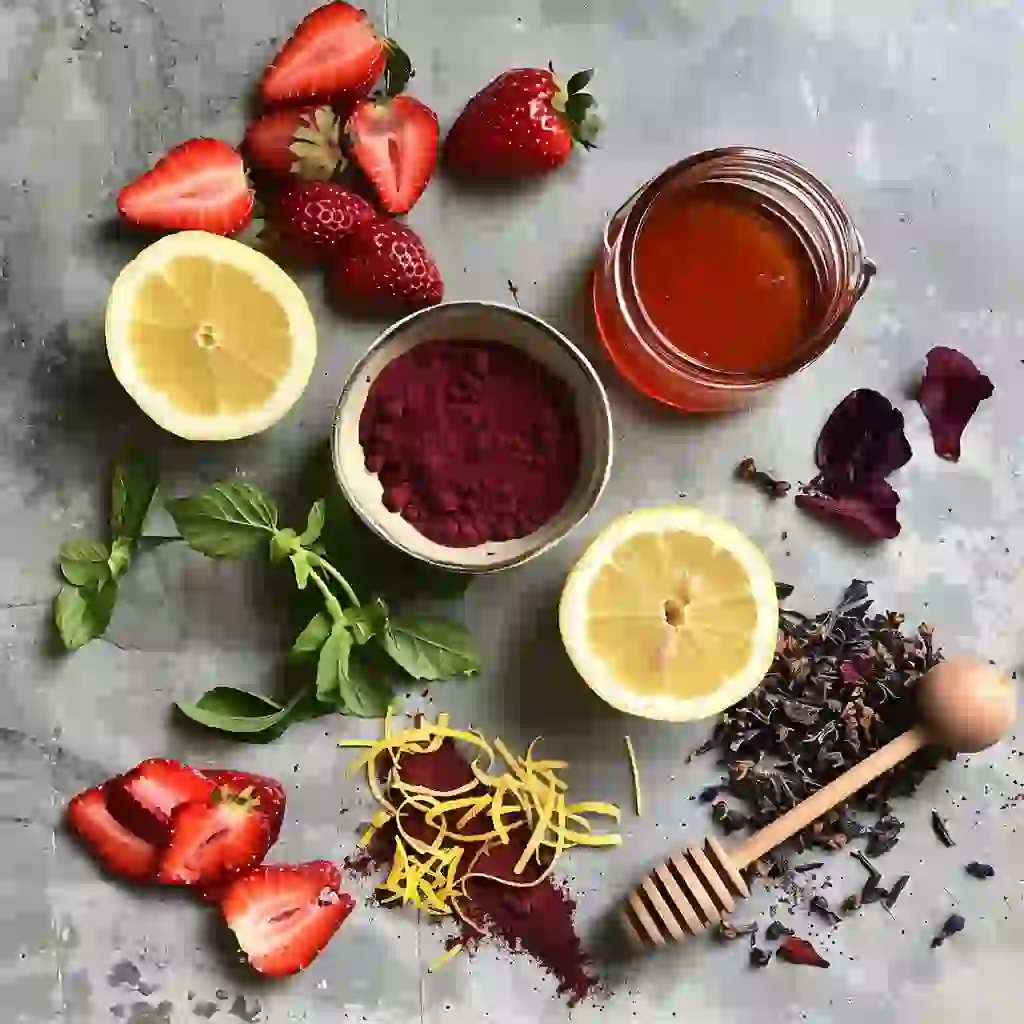
Here’s my go-to DIY red honey trick recipe:
Ingredients:
- 1 cup raw honey (local if possible)
- 2 tablespoons strawberry puree (strained)
- 1 teaspoon beetroot powder (for color)
- Optional: 1/2 teaspoon lemon zest or hibiscus for extra tang
Steps:
- Gently warm the honey in a heat-safe bowl until just loosened—not hot.
- Stir in the beetroot powder until fully blended.
- Add the strawberry puree and mix well.
- Let the mixture cool, then transfer to a jar with a lid.
- Let it sit overnight to infuse fully before using.
The result? A sweet, slightly tangy, beautifully red honey spread that pairs with everything from toast to herbal teas. The natural flavors shine, and there’s no need for artificial coloring or extracts.
Flavoring Tips: Strawberry, Beetroot, and More
When it comes to flavoring honey, I’ve learned it’s all about balance. Too much fruit, and the honey becomes watery. Too little, and the flavor barely comes through. Here are a few tips I follow:
- Use freeze-dried fruit powder for a strong flavor and vibrant color without affecting texture.
- Beetroot adds color, not much taste, so combine it with a fruit like raspberry or cherry for a deeper profile.
- Add herbs like thyme, mint, or lavender sparingly for a gourmet twist.
Below is a quick cheat sheet I made for my own flavor experiments:
| Ingredient | Effect on Honey | Flavor Notes |
|---|---|---|
| Beetroot Powder | Bright red color | Earthy, mild |
| Strawberry Puree | Adds texture & flavor | Sweet, tangy |
| Hibiscus Tea | Deep color, acidity | Tart, floral |
Flavored honey doesn’t need to be complicated. And trust me, when you swirl that ruby-red drizzle over Greek yogurt or use it as a glaze on grilled fruit, it feels like something special.
Best Ways to Use Red Honey in Daily Life
Morning Rituals: Red Honey in Warm Water or Tea
One of the simplest (and most satisfying) ways I use red honey is first thing in the morning. A spoonful stirred into a warm mug of water with a squeeze of lemon has become my go-to ritual. It’s soothing, gently energizing, and sets a calming tone for the day.
Some mornings, I’ll stir it into herbal tea—especially peppermint or chamomile. The red honey adds a fruity depth that plain honey doesn’t, and it looks beautiful as it melts into the cup.
Here are my favorite pairings:
- Red honey + warm water + lemon juice = light detox-like drink
- Red honey + ginger tea = sweet heat with a cozy feel
- Red honey + iced hibiscus tea = tart, floral, and stunning to look at
I can’t say it changed my life, but it certainly changed my mornings. And if you’re someone who skips breakfast, this is an easy way to start with something warm and light.
Creative Uses: Red Honey on Toasts, Fruits, and Snacks
Don’t stop at drinks—this stuff is versatile. Once I had a jar ready, I started experimenting. Here are a few ways red honey has earned its place in my fridge door:
- On toast: Especially over cream cheese or ricotta. It’s like a homemade gourmet spread.
- With fruit: Drizzle it over bananas, apples, or frozen blueberries for a quick dessert-like snack.
- In salad dressings: A spoon of red honey + balsamic vinegar + olive oil = the most colorful vinaigrette you’ve ever made.
- Glazed over roasted carrots or sweet potatoes: Trust me on this one—it’s a game-changer.
- As a yogurt topping: Paired with granola, it’s a satisfying mid-afternoon bite.
Red honey doesn’t just sit in a jar—it works. It sweetens, colors, and surprises. I’ve even seen some folks use it as a DIY lip scrub or hair mask base, though I haven’t gone that far yet. (Not ruling it out either.)
Check out What Is the Honey Trick Recipe? if you’re curious about the foundational method behind these flavorful twists.
Is Red Honey Just a Gimmick? Pros, Cons & Taste
Why Some Call It a Gimmick and Others a Wellness Boost
I’ll be honest—when I first heard about the red honey trick, I thought it sounded like one of those online trends that’s more about looks than value. And to some extent, that’s fair. A lot of the buzz is about how pretty it looks in a jar or on a spoon. But once I started playing with it in my kitchen, I realized there’s more to it than aesthetics.
Here’s what I’ve found:
Pros:
- It’s naturally flavored, using real ingredients like fruits and herbs.
- You control the sweetness and texture.
- It makes regular honey more versatile, especially for snacks and dressings.
- It adds color and appeal to everyday dishes without artificial additives.
Cons:
- It’s not a miracle health food. It’s still honey—a sugar, though a natural one.
- DIY batches can spoil faster if made with too much fruit or stored improperly.
- Some versions online exaggerate its benefits without context.
From my experience, red honey may not “detox your body” or “boost your metabolism” overnight—but it can make you look forward to that cup of tea, that morning toast, or that moment when you pause and savor something homemade.
What It Tastes Like Compared to Other Honeys
Taste-wise, red honey depends on what you put into it. The base is still honey—sweet and floral—but the added ingredients bring their own notes. My favorite version, with strawberry and beetroot, has a bright, fruity finish with just a hint of earthiness.
Here’s a quick flavor comparison I jotted down while sampling a few:
| Honey Type | Flavor | Best Use |
|---|---|---|
| Raw Wildflower Honey | Classic, floral | Tea, baking, marinades |
| Manuka Honey | Rich, earthy, medicinal | Wellness drinks, skincare |
| DIY Red Honey | Sweet, fruity, tangy | Toast, yogurt, dressings |
So, is red honey a gimmick? Maybe for some. But in my kitchen, it’s become a creative, flavorful way to rethink a simple pantry staple. And when something this easy makes your food look—and taste—extra special? That’s a trick I’m happy to keep using.
Safety, Storage, and Sustainability of Red Honey
Is Red Honey Safe to Consume Every Day?
This is a question I asked myself the moment I started spooning red honey into everything. While I’m no medical expert, I can share what I’ve learned from experience and research: red honey is as safe as the ingredients you put in it.
If you’re using high-quality raw honey and natural flavor additions like freeze-dried fruits or pure fruit powders, you’re in good shape. But here are a few safety tips I always follow:
- Avoid giving any honey to children under 1 year old—this goes for red honey too.
- If you’re using fruit purees, be sure they’re fresh and strained to avoid spoilage.
- Don’t overload your honey with fresh juice. Moisture shortens its shelf life and could promote fermentation.
As long as you’re using clean utensils and properly storing it (more on that below), a spoonful of red honey a day as a sweetener is no more concerning than traditional honey.
That said, I treat it like a treat—not a daily medicine or miracle.
How to Store It and Preserve Its Properties
After my third batch of red honey started to ferment (yikes), I learned that how you store it makes all the difference. Here’s how I now keep mine fresh and fabulous:
- Use a sterilized glass jar with a tight lid.
- Store it at room temperature, away from direct sunlight or heat.
- If you’ve added fresh ingredients like strawberry puree, refrigerate it and use it within 1–2 weeks.
- Label your jars with the date you made them. Trust me—it helps!
For longer-lasting red honey, I prefer using dried ingredients or powdered forms like beetroot and hibiscus. These keep the water content low and the honey shelf-stable for months.
Discover great ideas like Honey Trick Recipe for Memory Loss to explore other natural ways people are using honey blends creatively and mindfully.
In the end, the red honey trick doesn’t just sweeten your snacks—it encourages you to think differently about your ingredients, your wellness rituals, and what a little color can bring to your day.
FAQ Section
Is there such a thing as red honey?
Yes, red honey exists but it’s rare in nature. In some regions, bees create reddish honey from unique nectar sources like Christmas berry trees or certain wildflowers. However, the more common version of red honey is made at home by infusing regular raw honey with natural red ingredients like beetroot, hibiscus, or strawberries. These DIY versions are safe, flavorful, and popular for their vibrant appearance.
How to turn crystallized honey into whipped honey?
Turning crystallized honey into whipped honey is simple and satisfying. First, place your jar of crystallized honey in a bowl of warm (not boiling) water until it softens slightly. Then transfer it to a mixing bowl and whip it with a hand or stand mixer on medium speed for 5 to 10 minutes. The texture becomes smooth, creamy, and easy to spread—perfect for toast or drizzling over fruit.
How to make flavored honey from scratch?
To make flavored honey, start with a base of raw honey. Stir in flavoring agents like fruit purees (strawberry, raspberry), dried herbs (lavender, mint), or spice powders (cinnamon, ginger). Mix well and let it sit in a closed jar for a day or two to allow the flavors to infuse. For longer shelf life, avoid using ingredients that add too much moisture. Store in a clean, dry jar at room temperature or refrigerate if using fresh fruit.
Conclusion: Sweet Simplicity with a Twist
If you’ve made it this far, you now know the red honey trick isn’t just a social media trend—it’s a delicious, customizable kitchen project that adds color, flavor, and joy to everyday rituals. Whether you’re drizzling it over yogurt, swirling it into herbal tea, or whipping it into a creamy spread, red honey has the charm to surprise even the most skeptical home cook.
From learning how to handle crystallized honey, to experimenting with beetroot and strawberries, to figuring out the safest way to store your creations, this journey reminded me of something important: great things often start from simple ingredients and a curious mind.
Want to keep discovering unique honey uses? Check out The Honey Trick Recipe, don’t miss our What Is the Honey Trick Recipe?, or learn more about Celery Cucumber ACV Cooler for a refreshing detox-inspired idea.
This red honey recipe journey has made my mornings brighter, my snacks sweeter, and my creativity flow. I hope it does the same for you.
This recipe is shared for informational purposes and is not a substitute for medical advice.
Let’s stay connected!
Follow me on Facebook
Find new ideas on Pinterest
